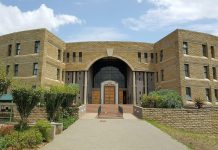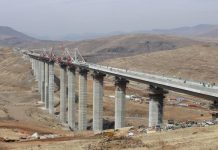Africa-Press – Lesotho. With the first stone laid in the foundation of the future telescope, experts anticipate this marvel of scientific engineering to be the most complex and expensive instrument within the National Heliogeophysical Complex.
The project’s cost is estimated to be around 36 billion rubles, and the telescope should be fully operational by 2030. In what is a groundbreaking development, construction has begun on the largest solar telescope in Eurasia, situated near the breathtaking Lake Baikal in the Republic of Buryatia, close to the border of Mongolia.
The Institute of Solar-Terrestrial Physics of the Siberian Branch of the Russian Academy of Sciences is spearheading this ambitious project, which forms a crucial part of the National Heliogeophysical Complex in Russia.
The state-of-the-art telescope is designed to unlock the mysteries of the Sun’s magnetic fields and solar activity cycle. Researchers aim to study the Sun’s photosphere in unprecedented detail, enabling an in-depth analysis of solar flares, coronal mass ejections, and other solar phenomena.
This invaluable instrument is poised to address both fundamental and practical scientific questions. The telescope’s optical scheme boasts 13 mirrors, with the primary mirror boasting a massive 3-meter diameter and constructed from a special glass-ceramic material called astrositall.
This innovative design, comprising a tower, technological equipment building, laboratory, and administrative buildings, will reach a towering height of 42 meters and weigh a staggering 120 tons.
Dmitry Kolobov, head of the laboratory of experimental solar physics and astrophysical instrumentation, expressed excitement about the selected location near Lake Baikal, citing the unique astroclimate created by the mountains and the lake.
This choice promises approximately 10% effective observing time per year, essential for studying the Sun’s corona. The significance of the Sun’s study stems from its profound impact on spacecraft, near-Earth space, above-ground infrastructure, and human health.
As communication and navigation satellites multiply with the country’s development, predicting and understanding solar influences becomes imperative to ensure safety.
With the construction of the solar telescope underway, scientists are excited to unveil the secrets of the Sun, a venture that will deepen our understanding of the universe while ensuring the safety and advancement of technology here on Earth.
For More News And Analysis About Lesotho Follow Africa-Press






